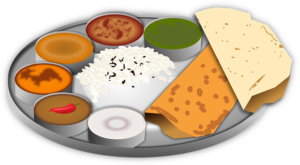South Indian Diabetic Diet – What to Eat and What to Avoid?
Many people hold on to the misconception that planning the right South Indian diabetic diet is rather tough. But, the fact is that chalking out the ideal diabetic dietary schedule based on South Indian foods is fairly simple. All it takes is a bit of careful planning from your side.
 This article is going to briefly elaborate upon both the foods to be consumed and avoided, in an appropriate South Indian diabetic diet.
This article is going to briefly elaborate upon both the foods to be consumed and avoided, in an appropriate South Indian diabetic diet.
- Everyone is aware that white rice is an inseparable part of a typical South Indian diet. But, here it needs to be noted that this food is full of unhealthy carbohydrates. Therefore, it is advisable that diabetics drastically reduce their intake of white rice. As an alternative, brown rice can be added to the diabetes diet. The abundant quantity of fiber that is there in this variety of rice safeguards the health of diabetics.
- A South Indian diabetic diet plan should have foods that contain health-promoting carbohydrates, such as pomegranates, apples, spinach, and broccoli. Here, persons with diabetes have to stay away from other carbohydrate foods like potatoes, corn, and sweet potatoes. These foods are loaded with carbs, which could be detrimental to your health.
- Idlis and dosas are among the most preferred foods in a South Indian breakfast. Here, there is no problem with idlis, which are steamed; they are overall safe to be had for people affected by diabetes. At this point, it must be highlighted that consuming Rava idli will be a much better alternative.
- But when we speak about dosas, you should confine only to whole wheat/ soya dosas. Dosas prepared regularly are best avoided from your South Indian diabetic diet.
- This guideline is extremely useful for non-vegetarians. It’s always desirable that you consume curries made from lean meat and skinless chicken, as the fat and cholesterol contents of such foods are relatively lower. In this respect, refrain from the consumption of red meat; at least minimize the intake.
- Individuals who are diagnosed with diabetes would help themselves if they could cut down their intake of condiments like ladoo, halwa, payasam, and jalebi. If you can fully abstain from these foods, that would be perfect! When these sweets are present in your everyday diet, you become highly vulnerable to sudden blood sugar spikes.
- If you are serious about keeping diabetes under control and taking food as medicine, you shouldn’t ignore this point. A South Indian diabetic diet must eliminate curries or chutneys that are made from coconut. Foods that are deep fried are not safe to be included in a diabetic dietary regimen, either.
- Coffee is among the most popular beverages in South India. Yet, diabetics living in this part of the country need not stop consuming coffee. The individual just has to make sure that sugar doesn’t get added to their coffee cup. The same guideline is very much applicable to tea, as well.
- People in South India make liberal use of oil in cooking a variety of foods. In this regard, we have to make a note of a very pivotal aspect. Regular cooking oil has to be discarded from the South Indian diabetic diet, as the saturated fat seen in it won’t help your cause. Instead, you choose canola oil, vegetable oil, or grapeseed oil.
Test your knowledge of Diabetes by taking this quiz
Diet plans for various Indian geographical regions:
Diabetic Diet Plan for People of Odisha and West Bengal (East India)
North Indian Diabetic Diet Plan
Diabetic Diet Plan for People of Maharashtra and Gujarat (West India)
Diabetic Diet Plan for People of Maharashtra
Diabetic Diet Plan for People of Gujarat
